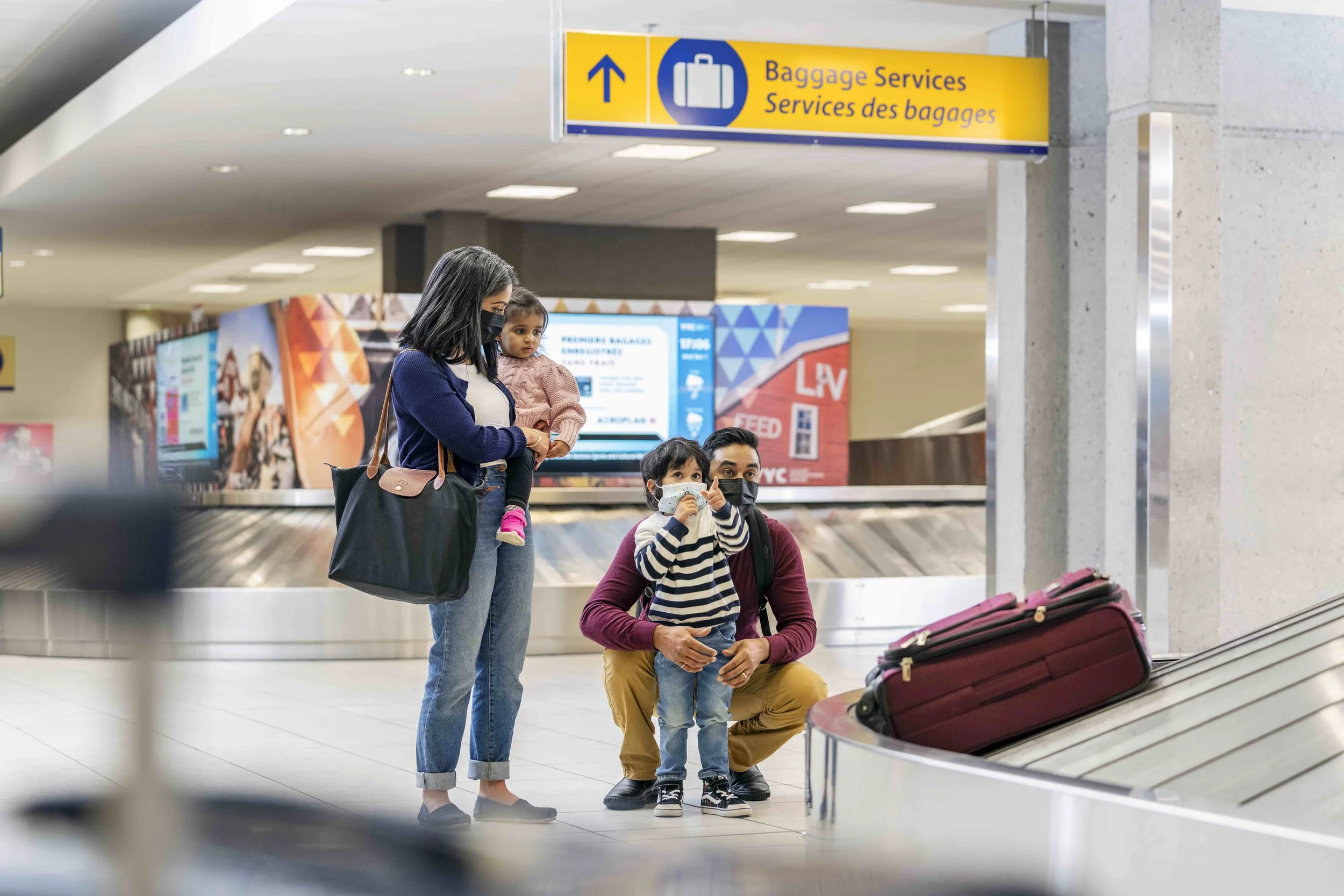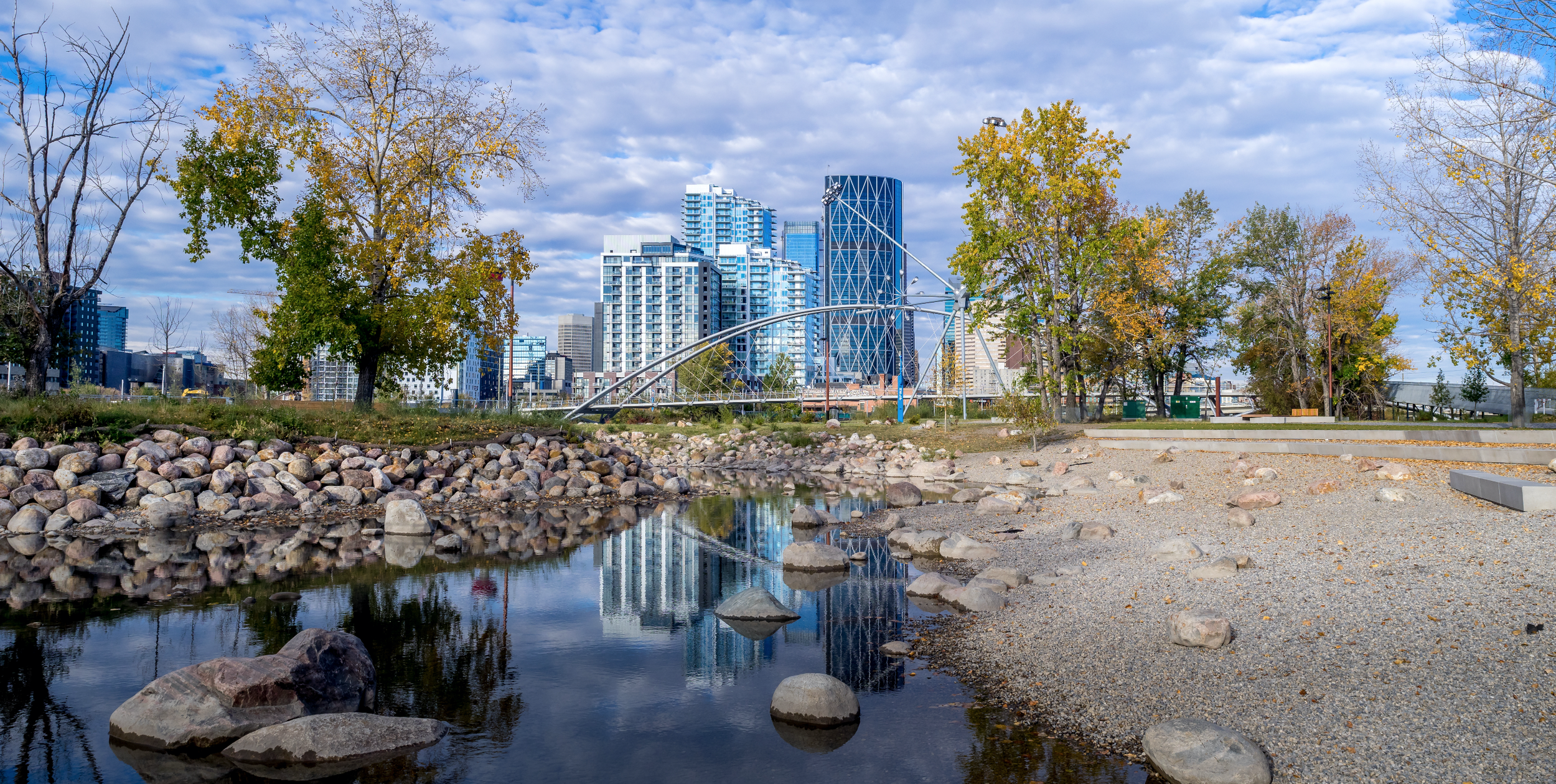3.0
Land & Ecosystem
Management
YYC Calgary International Airport and The Springbank Airport (YBW) are comprised of 5,400 acres and 1,100 acres of land, respectively. Due to runways, taxiways, navigational aids, and zoning, most of this land is restricted for aeronautical use - facilitating aircraft movement.
YYC has approximately 1,600 acres of developable land of which 60% has already been developed. The remaining 40%, or 640 acres, are in various stages of site readiness, with certain parcels that are shovel-ready and others that require planning and infrastructure investment before they are ready to be leased.

Applicable United Nations (UN) Sustainable Development Goals (SDGs)
At YBW, there are approximately 140 acres of developed land with 30 acres (about half a large shopping mall) ready for development in the short term and an additional 130+ acres slated for future development. These parcels of federal land are dedicated to supporting aviation. However, they also support many other land uses and exist within much larger ecosystems and watersheds.
The intent of our Land & Ecosystem Management Focus Area is to identify the actions needed to:
(1) support the safe operation of the aerodromes with respect to interactions with wildlife;
(2) ensure the sustainable development of our lands; and
(3) enhance natural systems that support broader biodiversity goals in the local environment wherever possible.
By 2020, ensure the conservation, restoration and sustainable use of terrestrial and inland freshwater ecosystems and their services, in particular forests, wetlands, mountains and drylands, in line with obligations under international agreements (15.1)
Take urgent and significant action to reduce the degradation of natural habitats, halt the loss of biodiversity and, by 2020, protect and prevent the extinction of threatened species (15.5)
By 2020, introduce measures to prevent the introduction and significantly reduce the impact of invasive alien species on land and water ecosystems and control or eradicate the priority species (15.8)
By 2020, integrate ecosystem and biodiversity values into national and local planning, development processes, poverty reduction strategies and accounts (15.9)
By 2030, provide access to safe, affordable, accessible and sustainable transport systems for all, improving road safety, notably by expanding public transport, with special attention to the needs of those in vulnerable situations, women, children, persons with disabilities and older persons (11.2)
By 2030, reduce the adverse per capita environmental impact of cities, including by paying special attention to air quality and municipal and other waste management (11.6)
By 2030, provide universal access to safe, inclusive and accessible, green and public spaces, for women and children, older persons and persons with disabilities (11.7)
3.1
Add biodiversity and Prevent Aircraft-Wildlife Interactions
Most airports in Canada are required to have a wildlife management plan that sets out how collisions between aircraft and wildlife will be minimized. While this is a critical goal to protect both aircraft and animals, the Calgary Airport Authority also recognizes the importance of managing wildlife and habitat in a manner that supports biodiversity wherever possible. Because ecosystems are complex and highly dynamic systems, the requirement to maintain aviation safety while contributing to broader biodiversity efforts need to be balanced. This also needs to be done while recognizing the importance of broader pressures on ecosystems, such as climate change, land use change and shifting aviation technology and practices.
Wildlife in and Around Our Airports
From 2020 through 2021, 18,480 observations of wildlife were made at YYC alone. While no endangered species were observed on our properties during this period, we recognize the threats to biodiversity and the importance of supporting local sensitive species while also minimizing aviation hazards posed by wildlife. The table below provides a list of terrestrial and avian species observed at YYC and highlights the diversity of wildlife present, as of 2021.
| Category | Common Name | Species Name | Alberta Wild Species Genera Status (2015) | Federal Species at Risk Status & Alberta Wildlife Act |
|---|---|---|---|---|
| Geese | Canada Goose | Branta canadensis | Secure | |
| Snow Goose | Anser caerulescens | |||
| Gulls | Ring billed gull | Larus delawarensis | Secure | |
| Franklin’s gull | Leucophaeus pipixcan | Secure | ||
| California gull | Larus californicus | Secure | ||
| Passerines | Sparrows (various) | Several | ||
| Starling | Sturnus vulgaris | Exotic/Alien | ||
| American crow | Corvus brachyrhynchos | Secure | ||
| Black-billed Magpie | Pica hudsonia | Secure | ||
| Common Raven | Corvus corax | Secure | ||
| Horned lark | Eremophila alpestris | Secure | ||
| Non-passerines | Swainson’s hawk | Buteo swainsoni | Secure | |
| Red tailed hawk | Buteo jamaicensis | Secure | ||
| Northern harrier | Circus cyaneus | Secure | ||
| Merlin | Falco columbarius | Secure | ||
| American kestrel | Falco sparverius | Sensitive | ||
| Great horned owl | Bubo virginianus | Secure | ||
| Snowy owl | Bubo scandiaca | Secure | ||
| Grey partridge | Perdix perdix | Exotic | ||
| Ring-necked pheasant | Phasianus colchicus | Exotic | ||
| Rock Dove | Columba livia | Exotic | ||
| Waterfowl | Killdeer | Charadrius vociferus | Secure | |
| Sandpiper (various) | Several | |||
| Horned grebe | Podiceps auritus | Sensitive | Schedule 1 “Special Concern” under SARA | |
| American avocet | Recurvirostra americana | Secure | ||
| Great blue heron | Ardea herodias | Sensitive | ||
| Goldeneye | Bucephala clangula | Secure | ||
| Bufflehead | Bucephala albeola | Secure | ||
| Blue-winged teal | Anas discors | Secure | ||
| Cinnamon teal | Anas cyanoptera | Secure | ||
| American green-winged teal | Anas crecca | Secure | ||
| Gadwall | Anas strepera | Secure | ||
| Mallard | Anas platyrhynchos | Secure | ||
| Mammal | American badger | Taxidea taxus taxus | Sensitive | Schedule 1 “Special Concern” under SARA |
| Coyote | Canis latrans | Secure | ||
| Richardson’s ground squirrel | Spermophilus richardsonii | Secure | ||
| Field mouse/vole | Various |
The figure below provides an overview of wildlife strikes at YYC. Tracking these incidents is a key indicator for aviation safety and the protection of critical species. This data demonstrates that most strikes occur during the local growing season. It is difficult to determine the exact population of species transiting the airspace in and around YYC, however trend analysis on the absolute strikes shows that 2020 saw a marked decline, indicating there is linkage to the volume of air traffic. This is a common trend at Canadian Airports.
To ensure the effectiveness of YYC’s wildlife management program and conservation efforts are effective, we must achieve our biodiversity and aircraft-wildlife interaction goal.
Tactics
-
In the next five years we will undertake an aggressive program to inventory the biophysical elements at YYC and YBW and develop a robust framework for tracking changes in species and biodiversity over time. This will enable us to establish scientifically based targets for biodiversity improvement and will also help identify nature-based land use solutions that can be implemented to achieve broader ecosystem goals.
-
We will continue to implement an adaptive wildlife management plan for our aerodromes and will ensure it is responsive to emerging changes in the landscape with the aim of preventing aircraft and animal collisions.
-
Using information collected through biophysical monitoring and collaboration with other land managers in the Calgary area, we will identify opportunities to improve local biodiversity through strategic land restoration projects, plantings, and other initiatives, such as through maintaining apiaries. Habitat management activities we already undertake for aerodrome compliance purposes (e.g., grass cutting, vegetation management) can also have benefits to the local ecosystem and those benefits will be considered when making decisions about vegetation management on our site.
3.2
Promote Sustainable Land Development Practices and Healthy Soil Systems
Healthy soil is the foundation of strong ecosystems. Lands at YYC and YBW should be developed, or redeveloped, in ways that prioritize nature-based solutions, such as natively vegetated areas, constructed wetlands, and rain gardens. Buildings, landscape features and plant material should be designed in ways that work to support natural biodiversity and take advantage of natural sources of energy. Adopting these principles can help achieve other key sustainability goals highlighted in this strategy, such as Greenhouse Gas emission reduction, carbon sequestration, climate change resilience, watershed stewardship and ecosystem health.
Natural Environment at YYC and YBW
YYC occupies approximately 2200 hectares of land and lies east of Nose Creek. The northwestern portion of the airfield occupies an escarpment, which overlooks the Nose Creek valley. Much of YYC land is flat, with minor undulation occurring throughout the property. It is also marked by several ephemeral wetlands. Calgary’s geographical location is within proximity of four Natural Subregions of Alberta including the Foothills Parkland, Central Parkland, Montane and Foothills Fescue.
YBW is located just east of the Rocky Mountain foothills and is part of the Foothills Parkland ecoregion. While most of YBW is flat and either developed or maintained grass, 13 small ephemeral depressions have been identified on the property with the majority being in the north part of the airport.
Due to the long aviation history of both YYC and YBW, there are areas at each site that have experienced spills, leaks or other forms of subsurface contamination. A critical aspect of supporting the natural environment is to ensure that any contaminant present in the subsurface does not pose a risk to human or ecological receptors. Soil impacted by contamination is often unable to support vegetation and requires remedial action to restore the microbiome.
-
Natural assets are essential to the community by providing flood management, climate regulation, clean air, habitat and biodiversity. This implementation tactic will focus on developing goals and initiatives around sustainable and low impact development of airport lands
-
The current site of YYC Calgary International Airport was established in 1938 and YBW airport operations began in 1969. Due to the aerodrome’s long and varied history, there are several contaminated sites that have been identified on airport property. We are committed to advancing the management and remediation of contaminated sites through establishing specific objectives around the remediation and risk management of contaminated sites
Tactics
Focus Areas












